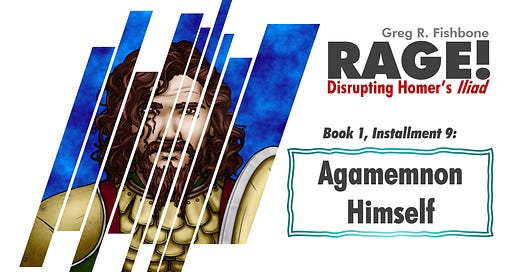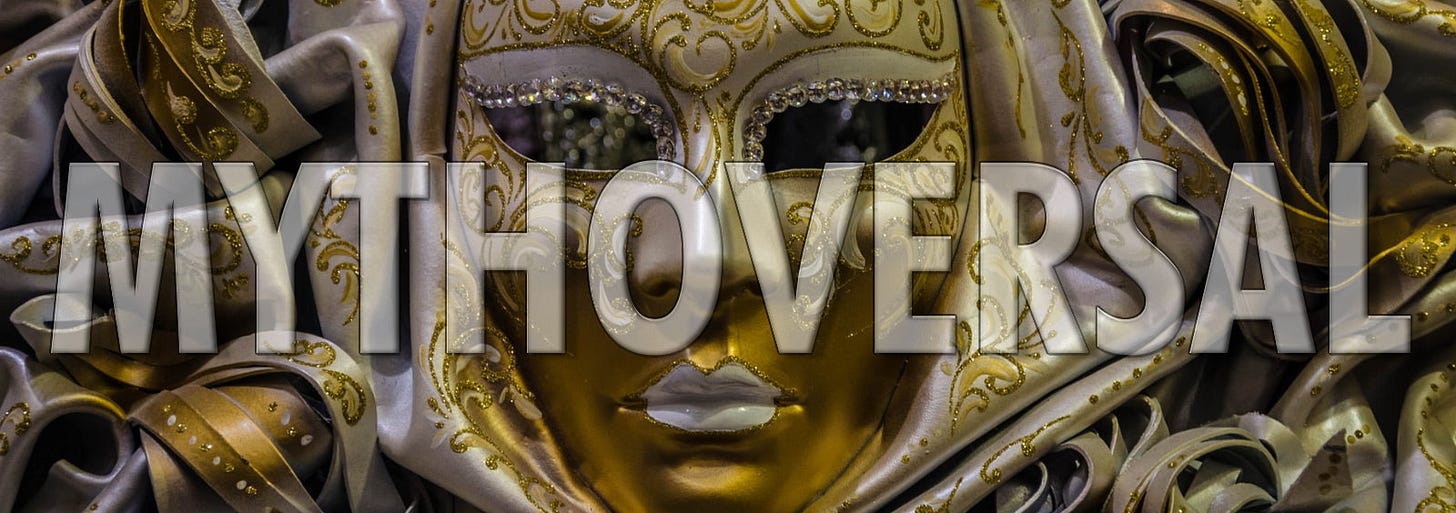Author’s Commentary:
My article, “When Agamemnon Slayed the Minotaur,” examined Terry Gilliam’s Agamemnon as depicted by Sean Connery in the cult classic 1981 film Time Bandits. This both follows and diverges from the many depictions of the Achaean Overlord in the epics of Homer and in various tragedies of Classical Athens.
This installment of RAGE! introduces Agamemnon’s perspective into my own retelling of the Iliad, so I’m very interested to know what you think of this character as a reader.
It’s hard to evaluate Agamemnon’s leadership from the perspective of our modern democratic traditions. Today, we’d call him an autocrat, though he leads a coalition that includes other allied kings, and so has to tread carefully. In Iliad I, we see his arrogance at its highest point, first with his rejection of Chryses back in Installment 3 (“He Said What?”), and now in the assembly called by Achilles.
Agamemnon is subordinate only to the gods, who manifest their whims through dreams, omens, and signs. And yet, such is Agamemnon’s anger and vindictiveness that his own seer is afraid to deliver truthful messages that might upset him. In modern parlance, we’d say that speaking truth to power, when that power was King Agamemnon, was a potentially fatal prospect.
Writing from Agamemnon’s perspective is a challenge. He is so taken with his own image, entitlement, and privilege that he honestly believes that his own aggrandizement and the interests of his coalition are one and the same.
This is where his arc begins, as far as the Iliad is concerned, and he does become a better leader over the course of the story. There is nowhere else for him to go but up, and to be taken down a few pegs in the process, humbled in his dispute with Achilles while still maintaining his authority. Agamemnon will later claim to have been acting and speaking at this point under the influence of Ate, goddess of bad decision making.
Homer does something I find interesting at this point in the story. Having established that this will be a rage-themed story, Homer has Agamemnon call for a volunteer to relinquish his war prize and attendant honors. This would put the volunteer into a position that Agamemnon acknowledges as degrading and rage-inducing. As honor flows from the volunteer to Agamemnon, rage flows in the opposite direction.
We know Achilles as the character on the other end of this transaction and the story that results, but at this point any character in the assembly could have stepped into the role of Iliad protagonist. Or Agamemnon could have kept that role on for himself.
Homer’s Iliad, the story that survives, once existed as part of a multiform tradition with a wide assortment of variations. In retelling this story, it’s fun to pause to consider other possible paths, including radical ones that might have seen Ajax or Diomedes take the place of Achilles.
How would you reimagine the Iliad? Let me know in the comments.
—Greg R. Fishbone, Mythoversal Author-in-Residence
Nine years into the siege of Troy, the greatest Achaean warrior, Achilles, is sidelined by rage and resentment following a conflict with his commander, Agamemnon. This short but intense phase of warfare leads to devastating losses on both sides, conflict among the gods, and great tragedy on a human level.
Rage! is a disruptive retelling of Homer’s Iliad, restoring diversity, inclusion, and equity to a three-thousand-year-old tradition.
Through retold myths, informational articles, and educational resources, Mythoversal seeks to foster a deeper understanding of traditional cultures, their impact on each other, and on the modern world.
Other Books You May Like:
Madame Maudelynne and The New Way: A short story by Vanessa Jones.










